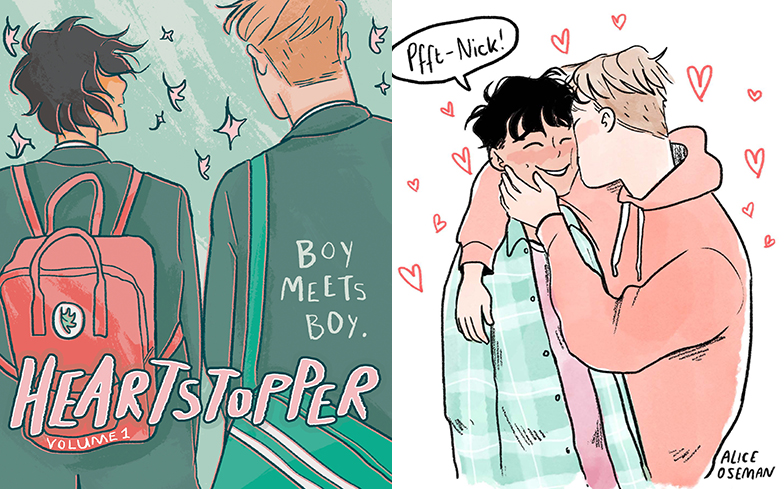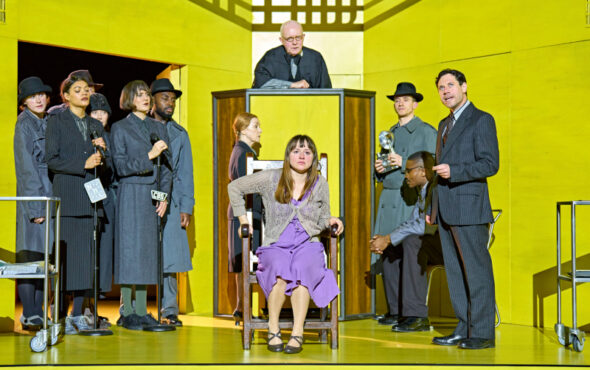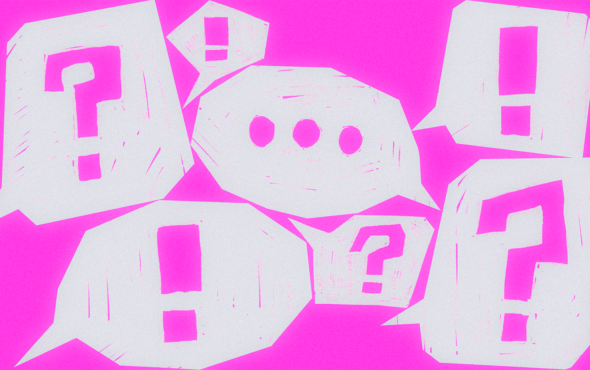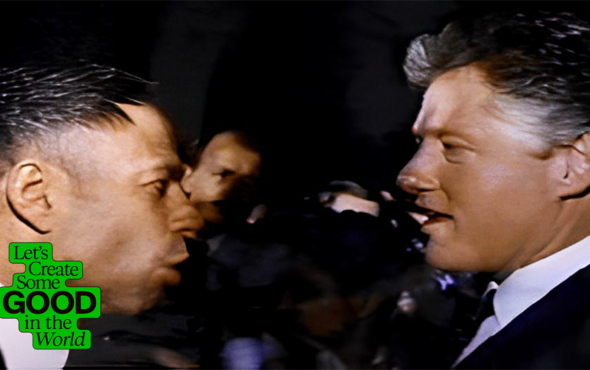
“Boy meets boy. Boys become friends. Boys fall in love…”
After finding success with young adult fiction novels Solitaire, Radio Silence and I Was Born For This, 24-year-old author Alice Oseman is turning her attention to illustration with the release of graphic novel Heartstopper, a love story that takes place at a British all-boys grammar school.
The charming same-sex romance, which began (and continues) life as a thrice-monthly web comic, follows openly gay Nick and rugby player Charlie as they become unlikely friends and, eventually, discover they have feelings for one another.
We spoke to Alice about Heartstopper’s journey to publication and the importance of queer love stories in mainstream media.
Where did the inspiration for the characters Nick and Charlie come from?
So Nick and Charlie were side characters from my first published novel Solitaire, which came out in 2014. They weren’t main characters, but in the book they’re in a very supportive and loving relationship, and when I finished the book I just couldn’t stop thinking, ‘What’s the back story of Nick and Charlie?’ So I knew I wanted to tell it somehow, and for ages and ages I tried to plan a novel because that’s primarily what I do, but eventually I came to the decision to do it as a web comic. I feel like that format suits them a lot better.
Why was it so important for you to write a story with LGBTQ characters at the forefront?
My books have always had queer characters, it’s something I feel is really important to me personally but also to my readers. It’s always been a natural part of my books. There are LGBTQ characters in all my work, and now Heartstopper as well.
Mainstream media, for the most part, seems to avoid queer love. Do you think that Heartstopper’s popularity proves there’s an audience for these stories?
Yeah, definitely! Heartstopper started life as a web comic, which is typically an indie, niche genre. Web comics rarely get popular. So the fact that Heartstopper has gathered such a huge audience and it raised all the money in the kickstarter, and now it’s being published by a traditional publisher, I think it really shows there’s a huge audience out there who want these kinds of stories.
One of the things that I loved about Heartstopper was that it doesn’t centre around tragedy or trauma, which a lot of queer stories tend to do. Was that important for you?
Definitely. I mean, those kinds of stories are important for young readers as it means they get to see their problems and issues explored in text, but it’s also important – particularly for LGBTQ people – to see characters like themselves just enjoying life and falling in love and making friendships. So I think having that variety is important.
Have you had any great feedback from LGBTQ readers?
I’ve had so many people reach out to me saying, ‘It’s so nice to see someone like me in this comic just falling in love and having a cute little romance’, but also from people saying, ‘Nick’s journey has helped me come to terms with being bisexual’, and stuff like that. For me, that’s the most wonderful thing.
What has the response been like from straight readers? Do you feel like it’s educating people?
Yeah, I hope so! The good thing about Heartstopper is that it appeals to everyone. Obviously it’s most important for LGBTQ readers, but straight readers can enjoy it as well, and learn about the issues and tensions that young LGBTQ people face in the process. It’s through stories like this that straight and cis people can improve their empathy.
Have you ever worried that you might face resistance for having stories so focused on queer characters?
That’s certainly something I worried about with my YA novels, because my second and third in particular feature quite diverse casts. I remember asking my agent, ‘Do you think this is going to affect whether it will get published or not?’ But I’ve been really lucky in that the publisher of my novels, HarperCollins, and now obviously Hachette who are publishing Heartstopper, they’ve both been so supportive of me writing all these LGBTQ characters. I think a lot of that has to do with the culture of Young Adult fiction, which is so different to all other areas of fiction. YA fiction is just so open and accepting to all sorts of stories and characters. So yeah, I think I got lucky.
Are there any other queer books or comics that you’ve really enjoyed reading?
One of my favourite series is called Long Exposure, and it’s an online comic by an artist called Mars. It’s about a nerd and a bully who get supernatural powers and they have to team up and obviously they fall in love. It’s great. I’d highly recommend it.
Are there any LGBTQ icons that you look up to?
There’s a lot! But I think I’ve gotta say Juno Dawson, just because I’m so active in the YA community, and Juno has been doing so much amazing work as a trans woman and bringing those issues to light and into the world of literature. She’s an author who’s doing such amazing things with her work, and that’s the sort of person I’d aspire to be like.
A study by Ditch The Label found that 57% of young people don’t identify as exclusively straight. Do you think this shows that the next generation are more open to narratives and experiences like those found in Heartstopper?
That makes total sense. I mean, my work is pitched towards young people and I think that generation are so much more accepting and that’s only improving with time. Like we were saying before, the success and readership of stories like Heartstopper just goes to show how many people out there see some part of themselves in queer stories.
This is probably quite a long story, but how did Heartstopper go from being a web comic to a published, physical book? It must be an amazing experience.
It’s crazy, and you’re right it is a long story. I started the web comic in 2016, it grew an audience throughout 2017, and then I decided at the start of 2018 that I wanted it to be a book, which is a thing that a lot of web comic creators do, they decide they want it to be a physical product and then they usually crowdfund and self publish, so that’s what I did. I did have a literary agent at the time, because I’m an author as well, but I talked to her and we were saying how there’s not really an audience in the UK for graphic novels, so it would be better if I just self published. That’s what I did last year, I formatted the book myself and ran a kickstarter, and basically my whole 2018 was just making this book. During that same time, I was contacted by Hachette as they were interested in publishing a graphic novel by me, but they were thinking it would be a completely different story. But as the year went on, and they saw how well Heartstopper was doing, and then obviously the kickstarter showed how much interest there was, Hachette eventually decided that they would like to offer for Heartstopper.
Are there any other characters in the Heartstopper universe that you’d like to give their own story?
So many! I’d love to write the full back story of Tara and Darcy, who just appeared towards the end, they’re in a relationship and we see them a bit more in volume two of Heartstopper, but I’d love to have the time to write the full story of how they got together. That would be really fun.
Given the success of Love, Simon, would you like to see Heartstopper make the jump to the big screen?
Yes, and I think every author secretly wishes for that to happen. That would be amazing.
Heartstopper Volume One by Alice Oseman is out now.






